I got up early again – it is so much nicer cycling in the cool of the morning – and set off to see the remaining sites that I had not had time for yesterday. First up was the Sri Maha Bodhi, the world’s oldest documented tree. It sits in the geometric centre of Anuradhapura and is surrounded by very large parking area to accommodate crowds of pilgrims at festivals. Today it was quiet, the car parks were empty, and I could leave my bike very close to the entrance. I stopped to admire a beautiful lake with lilies and many birds, with a brilliant white stupa reflecting off the water.
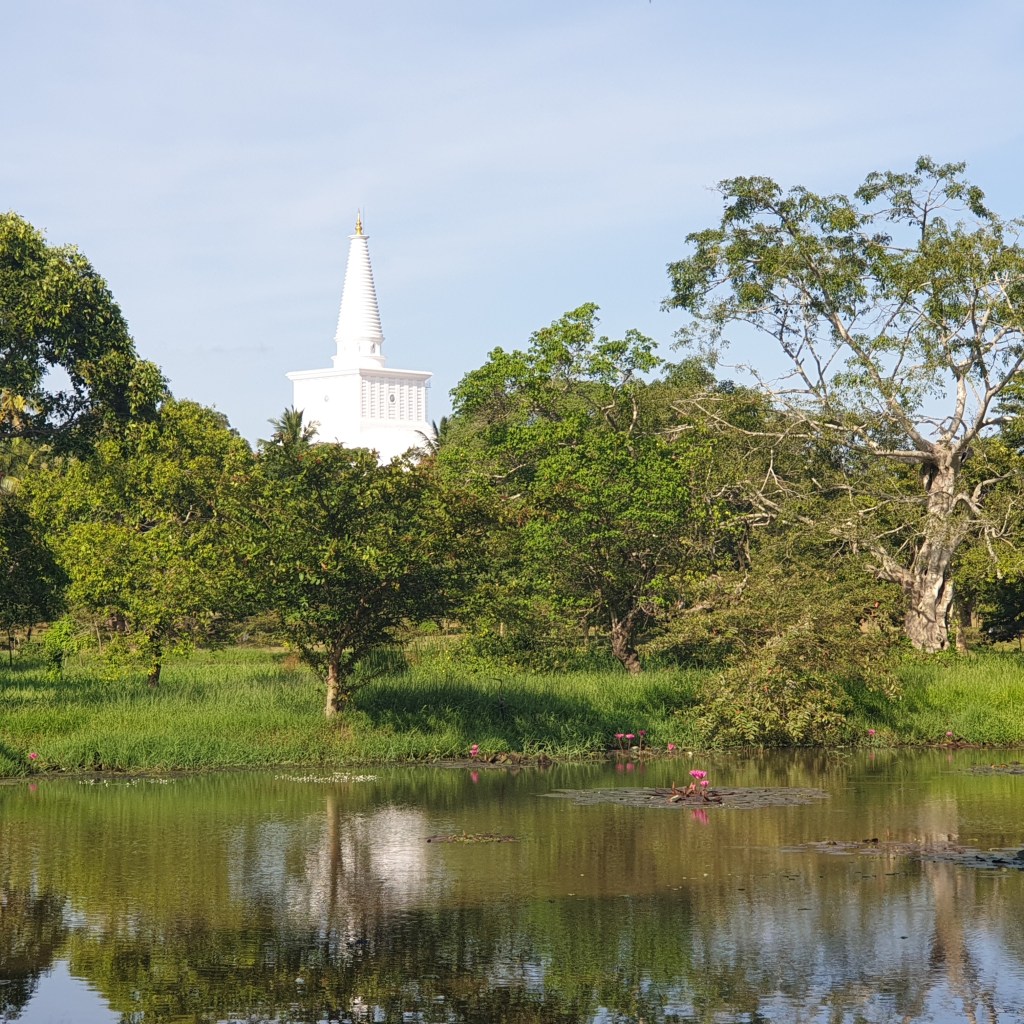
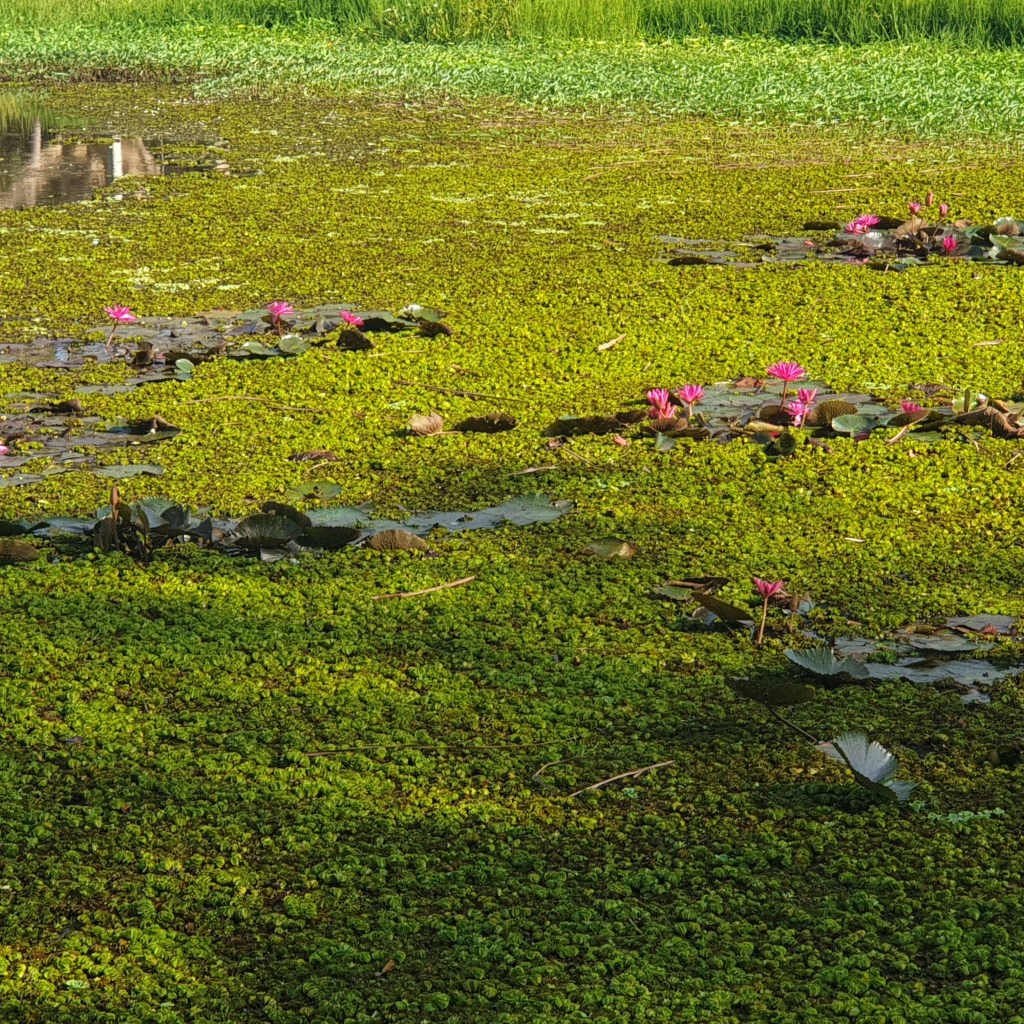
The Sri Maha Bodhi is a bo (or bodhi, or sacred fig) tree grown from a cutting brought from India, possibly by the daughter of Emperor Asoka in the third century BCE; some legends say that it was derived from the very tree under which Buddha attained enlightenment. Whatever the truth, written records of the tree being tended stretch back over 2000 years.

The usual routine was needed to enter an inner courtyard housing the tree with its shrine – shoes and hat off, and security check (the shrine was the site of a bloody terrorist attack by Tamil separatists during the Sri Lankan civil war). The tree itself was a normal looking fig tree with its branches supported by golden scaffolding, but the surrounding shrine had a very special feeling to it. Pilgrims streamed in, bringing offerings of flowers or rice. Someone gave me some flowers to make my own offering, and like the other visitors I placed them to make an appealing pattern.
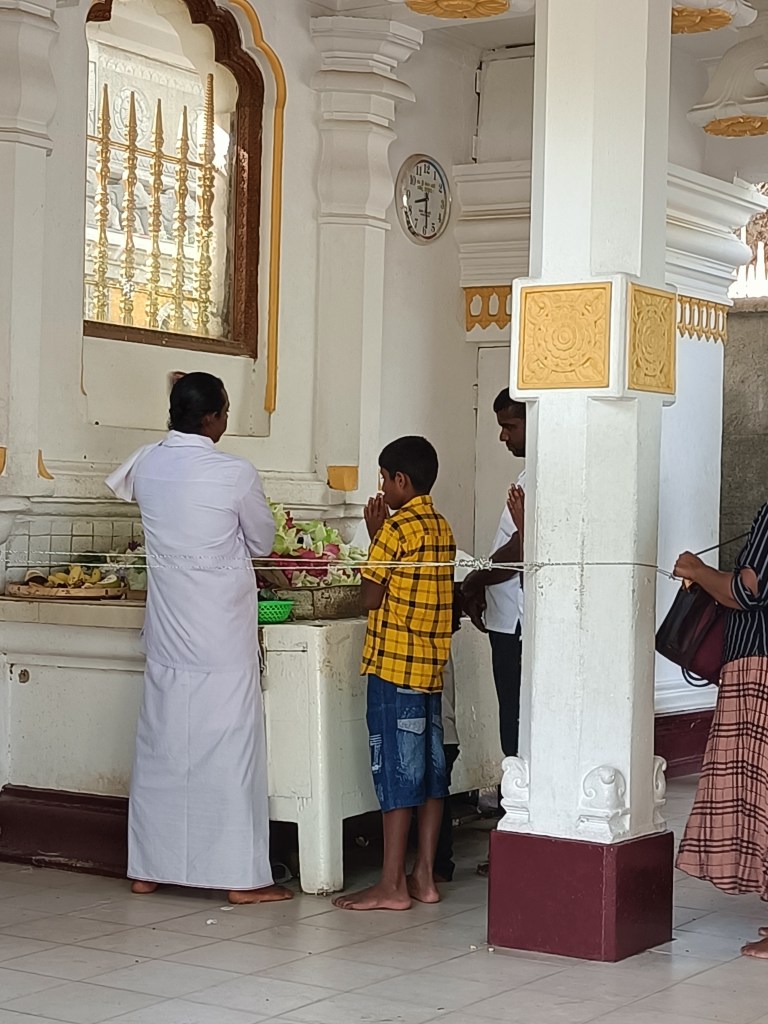
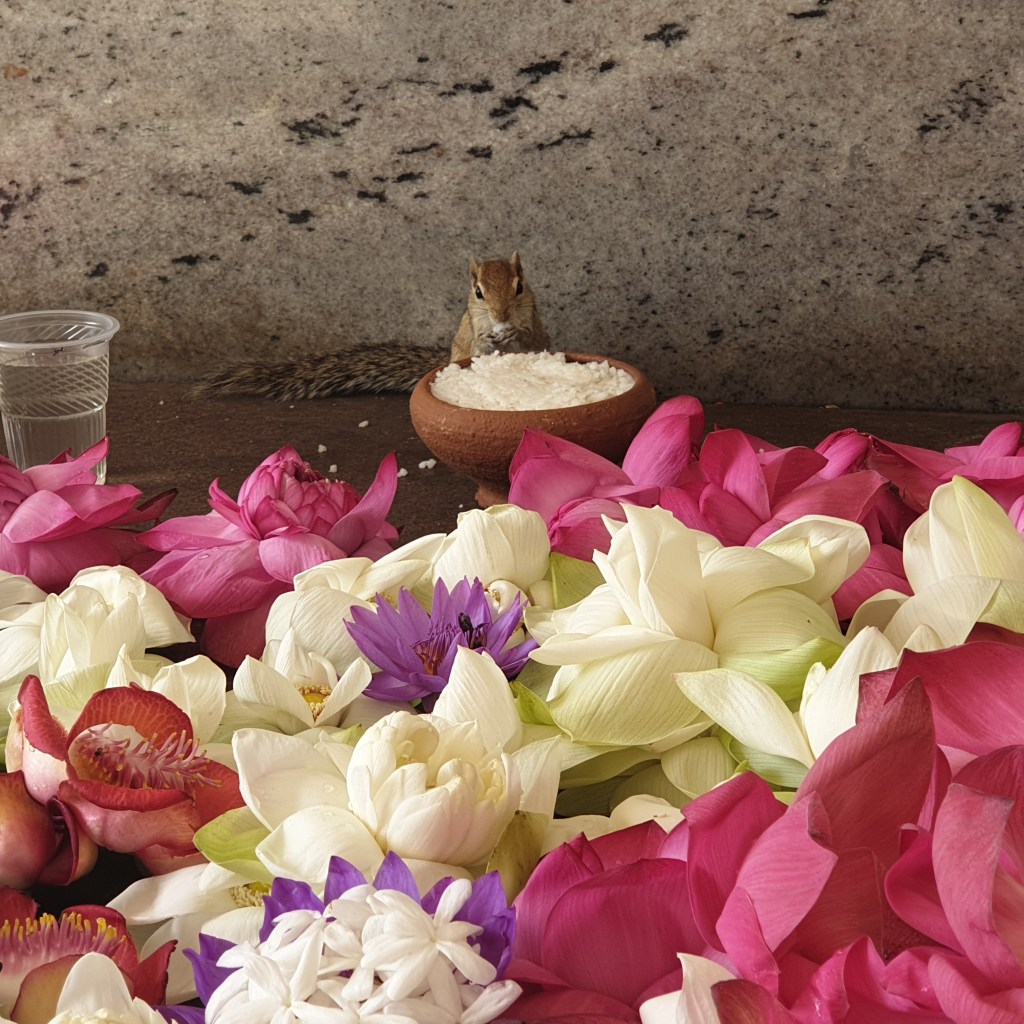
Other pilgrims and local worshipers sat on the ground, praying with beautiful chants, which were half-way between singing and talking. The combination of the cool morning air, the chanting, and the strong smell of flowers gave a deep feeling of peace, and I sat down and closed my eyes to enjoy it.
Eventually it was time to move on, and my next stop was the huge Sandahiru Seya stupa, which can be seen from almost anywhere around Anuradaphura. It was started in 2010 and construction was only just finishing, so it was not yet recommended in any of the guidebooks. I found its perfect shape and brilliant white colour very beautiful and watched the workers completing the final bits of work.
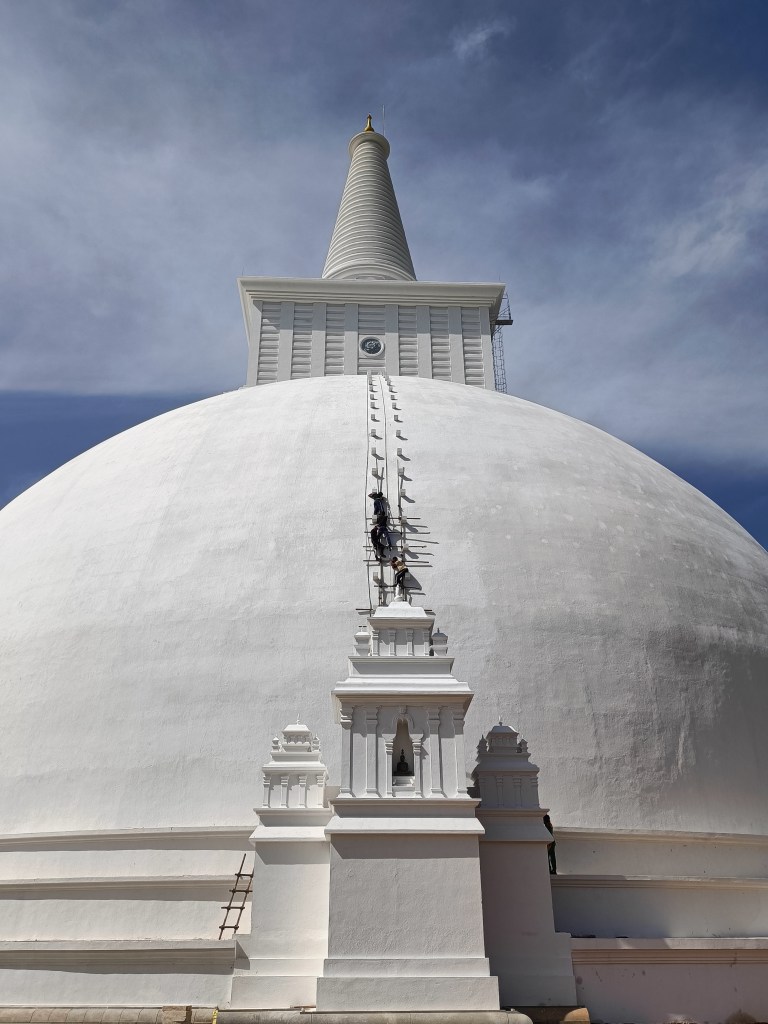
From there I headed to another less-visited site – the former royal gardens, that are over 2000 years old. They were poorly signposted, but I eventually found them at a the bottom of a steep slope leading down from the embankment of an artificial lake. I found some carved stone structures in an advanced state of decay that were once water basins. There were no signs at the site and little text about the site in Lonely Planet, but I had the luck to overhear the explanation of the guide escorting a group of western tourists (the first I had seen that day). I learnt that a system of channels led from the lake above to irrigate the garden and also produce an artificial waterfall over carefully placed huge-boulders. With the added explanation the site came to life, and I could imagine the royal family bathing in luxury all those years ago.
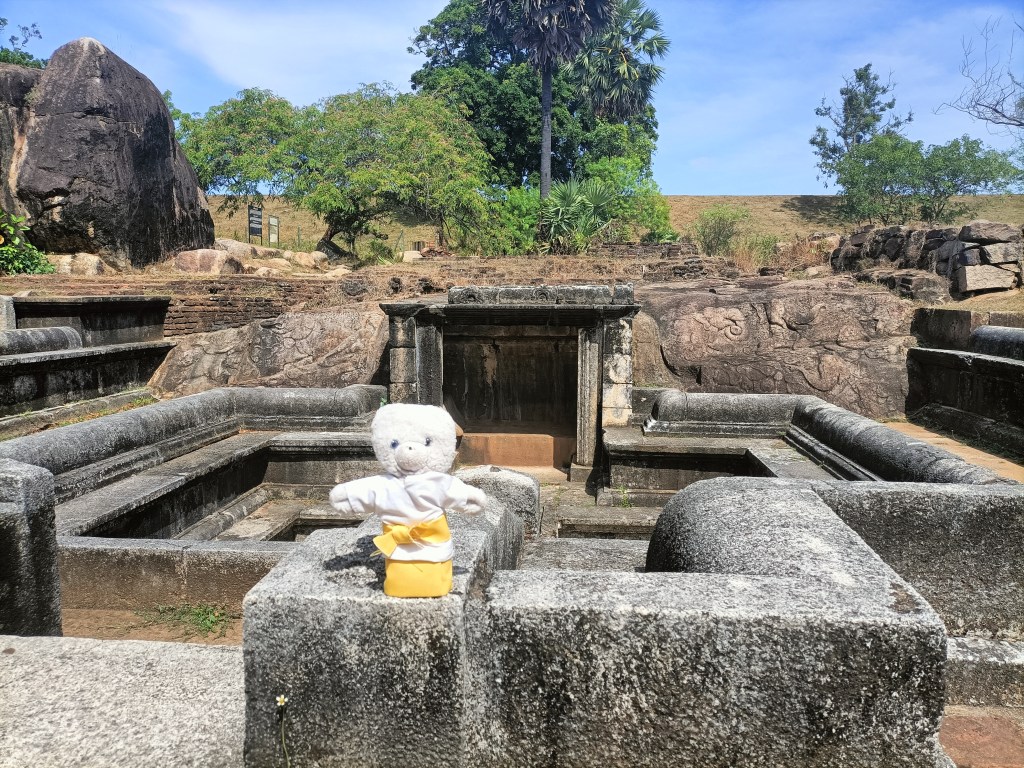
Next stop was Vessagiriya, a little-visited cave monastery that was founded over 2000 years ago, possibly by the Indian prince who introduced Buddhism to Sri Lanka. The guardian of the site attached himself to us – the only visitors – and gave an excellent guided tour. He pointed out the huge boulders that had been brought here and raised onto small supporting stones to form some of the caves – how this was done remains a mystery. He also showed us a line of small holes in a rock, and explained that builders would fill these holes with burning oil, and then suddenly cool the rock with water to make the boulder splinter along the line.

My final destination was the rock temple of Isurumuniya, set beside a particularly beautiful pond with lotus flowers. This temple is also ancient, originally dating from around 300BCE.

Next to it stood a museum of ancient carvings, including one called “the Lovers” showing a prince who gave up his right to be king in order to marry a girl from a humble background.
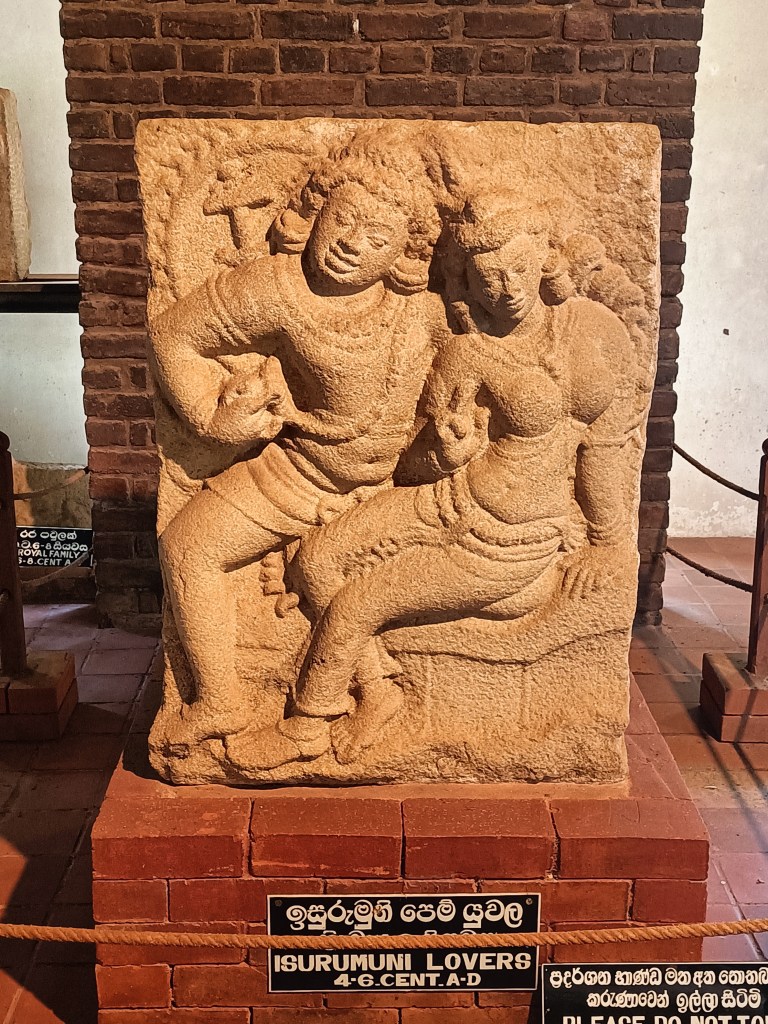
The top of the temple gave a nice view over the area, with the stupa of Sandahiru Seya prominent as usual, and of the pretty elephant carvings in the stone by the pool.
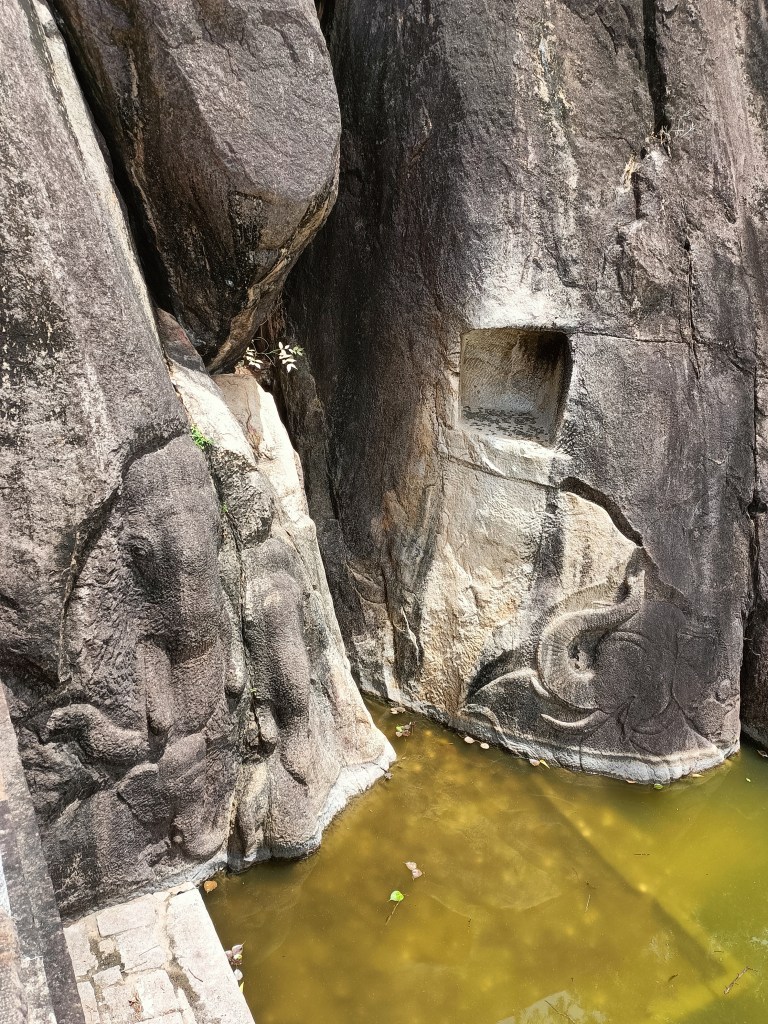
It was now midday and the sun made the walk around this temple with bare paws particularly hard (I had forgotten to pack socks again). I concluded it was time to retreat to home to cool off in my guest house’s air conditioning.
After a couple of hours, I set off and had a short picnic lunch of bananas in one of the rice fields.
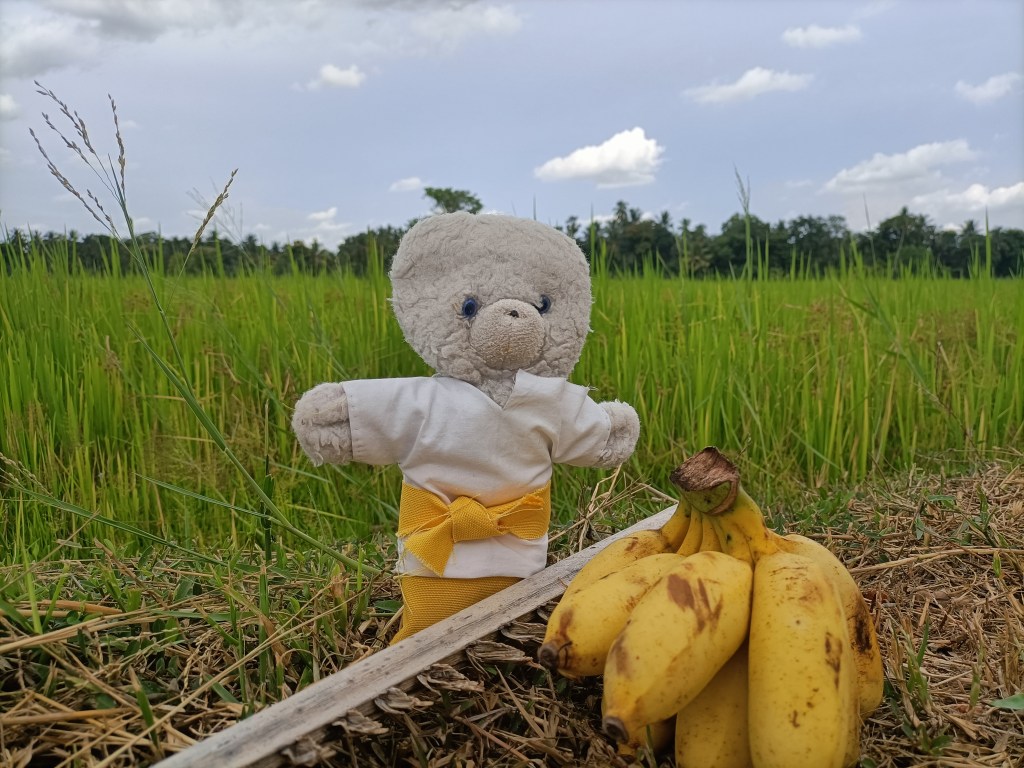
A tuk-tuk driver spotted me and offered me a ride to see a “special tree”. Intrigued, I accepted his offer and after a short drive he showed me probably the biggest tree I have ever seen – a sprawling banyan with a huge mother tree and several almost equally impressive daughter trees sprouting from massive aerial roots.
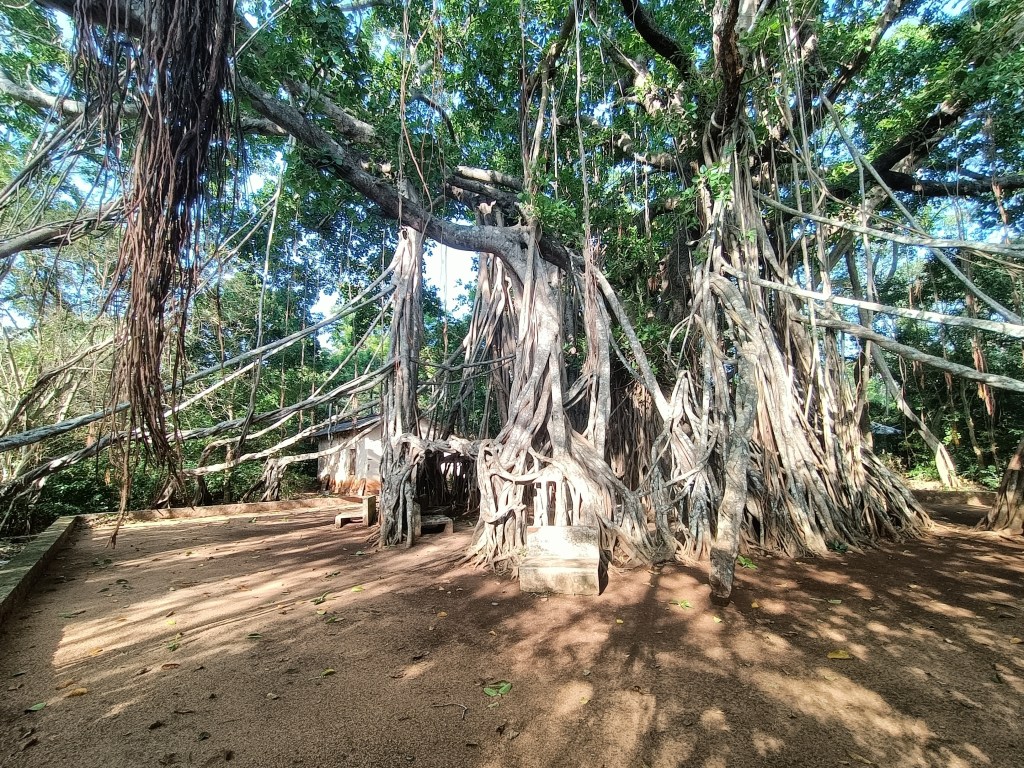
Next, I had intended to return to the Sri Maha Bodhi to soak up more of the special atmosphere there, but dark clouds had gathered, and I could hear thunder in the distance. I retreated to my guest house just in time to avoid this……
It was supposed to be the dry season in Anuradhapura, but I was unlucky. I stayed at the guest house for the rest of the afternoon and worked on my blog. You never know in Sri Lanka when you will have electricity and an internet connection.
Definitely more exotic than Valenciennes. Nice to read your blog it gives me an opportunity to escape virtually.
As always thorough and interesting. Bonnes vacances
LikeLike
A good post. Thank you 🙏
LikeLike
I found the boulders on small stones really interesting – there must be a real skill in keeping them balanced. The rain is impressive but we could probably do with a bit of it here in the UK right now!
LikeLike